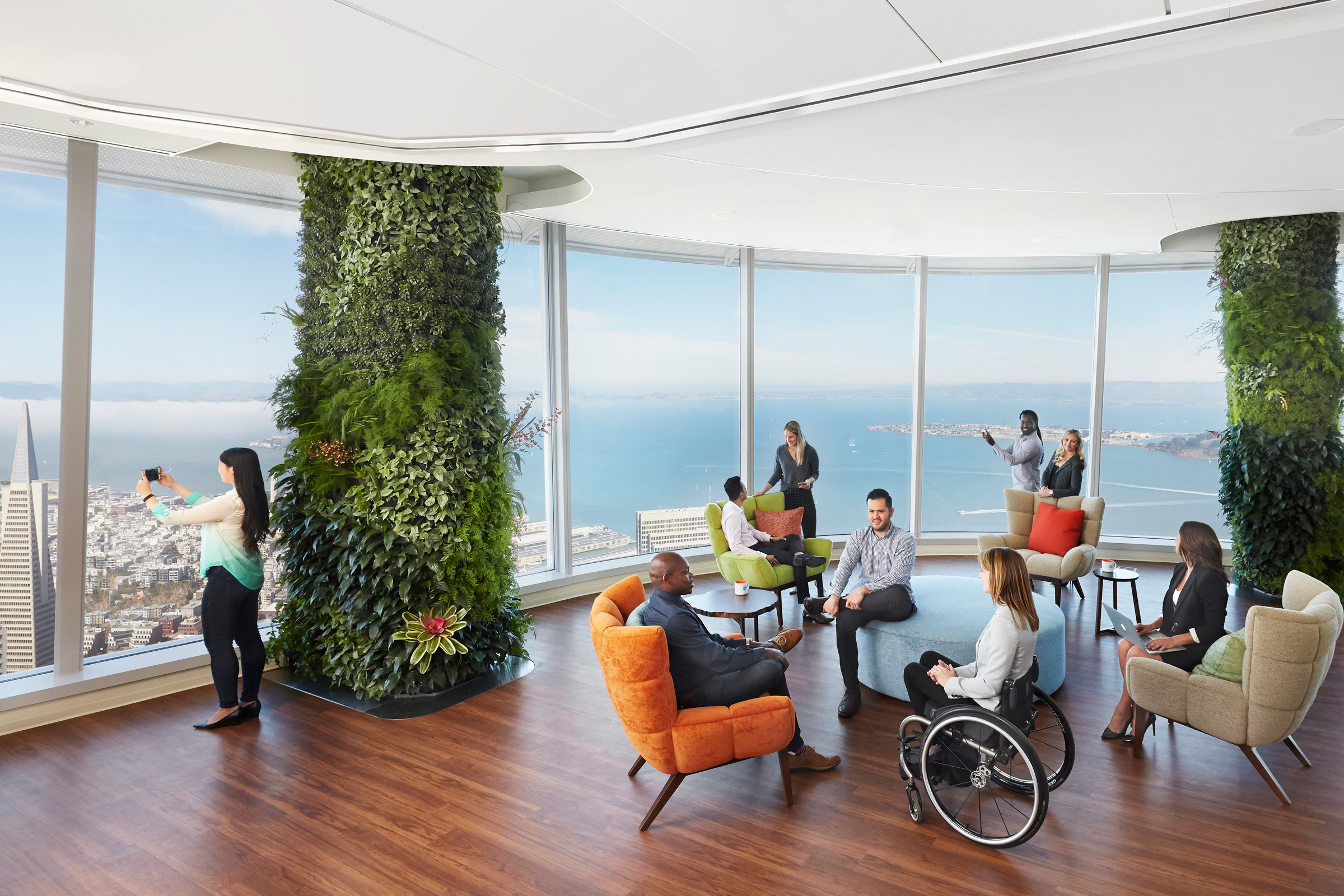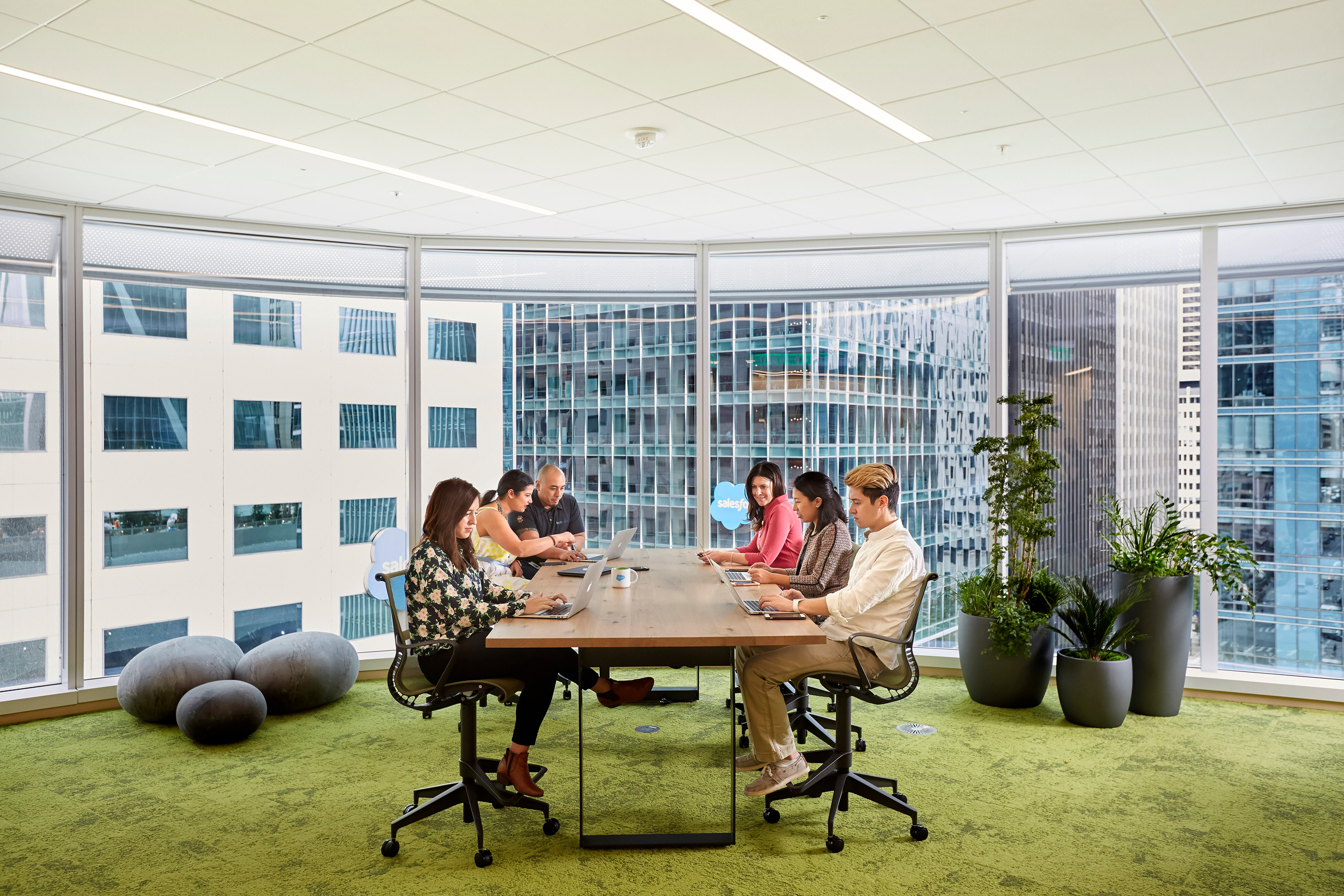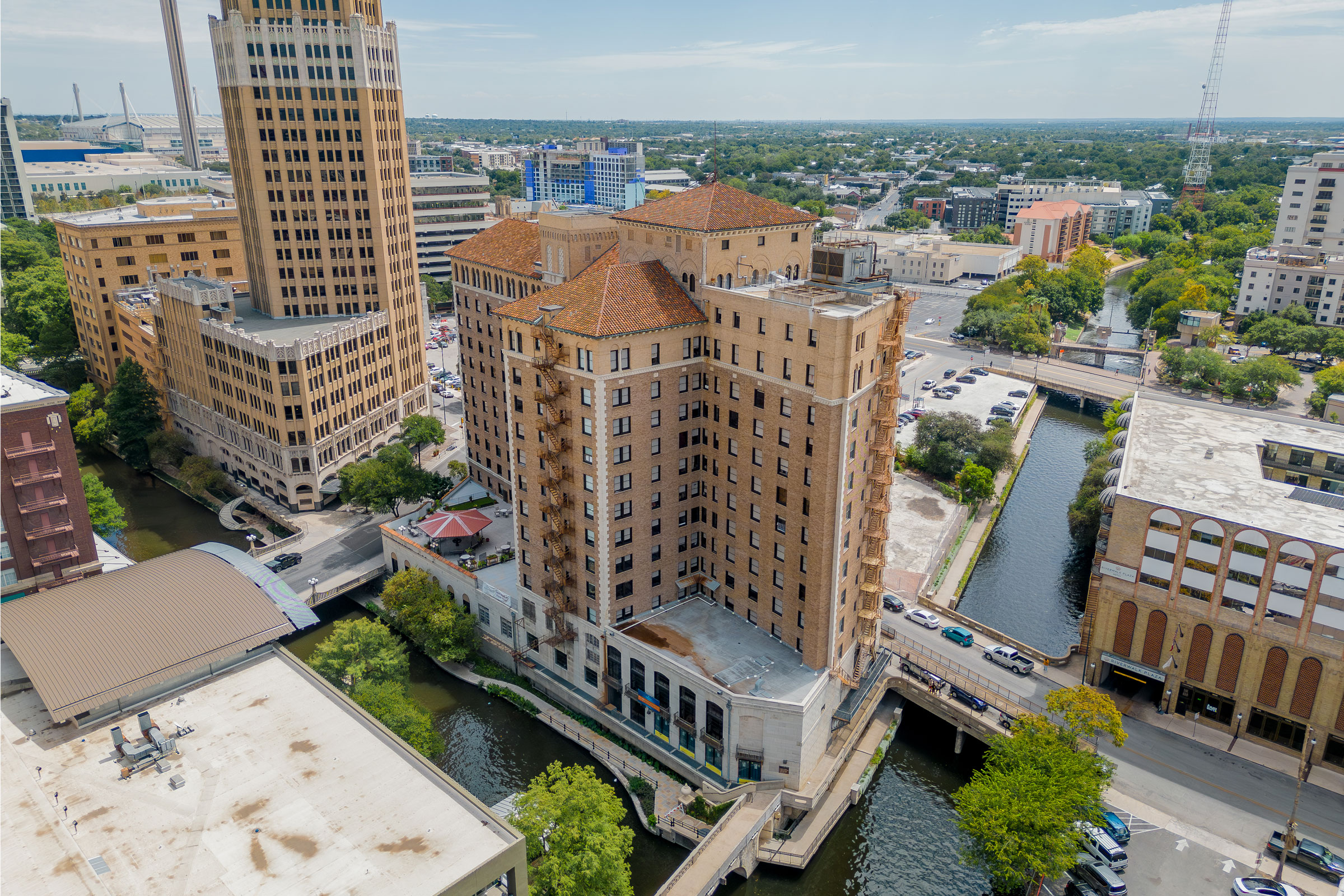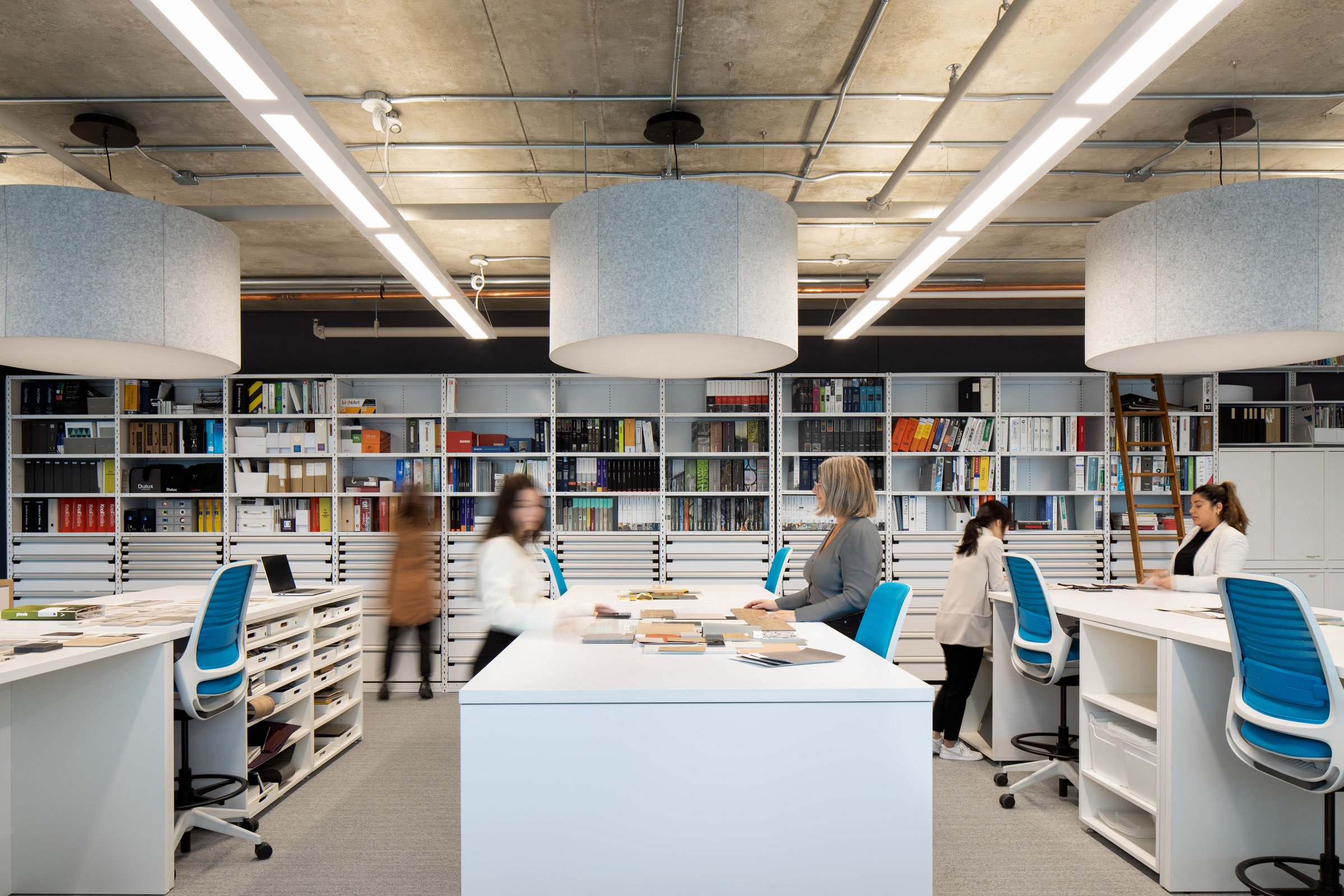Story at a glance:
- Teams at Salesforce are getting back to work in new ways all over the globe, from Sydney to San Francisco.
- Breakout and collaboration spaces have long been at the core of Salesforce’s design philosophy.
- Salesforce is reducing its number of desks by 40%—adding more booths, communal tables, couches, whiteboards, and mobile audiovisual equipment.
In late spring 2021 Salesforce Tower San Francisco reopened. It’s one of 26 major Salesforce offices to reopen since the pandemic closed things down in early 2020, and it opened using what the Salesforce team calls its “Success from Anywhere” return-to-work model.
In Sydney, Australia Salesforce welcomed back hundreds of employees safely and productively starting in August 2020. That experience taught the team a lot about this new way of working, including—somewhat surprisingly at first—that Thursday is the new Monday. Thursday was quickly seen as the most popular day for Salesforce Sydney employees to go into the office. Their findings showed that employees prefer to start the week from home with only about half of collaboration space being used. By Wednesday and Thursday, that jumped to 80%.
Salesforce reports that more flexibility leads to more productivity and balance. They say employees are 16% more likely to agree that they are more productive at home, and 13% more likely to agree their teams are more productive at home than in the office. And they have more balance while they do it—20% of employees at home say they’re more likely to integrate well-being breaks into their day than employees in the office.
The Salesforce team has found that the office continues to be a place for human connection and collaboration. In the Sydney office, 64% of collaboration spaces like lounges and conference rooms were utilized; whereas only 24% of desk space was used (read what the folks at Perkins&Will are saying about unused desks).

In Sydney, Australia, Salesforce welcomed back hundreds of employees safely and productively starting in August 2020. Photo courtesy of Salesforce
But how are leaders at Salesforce making sure their employees are safe at work? The Salesforce Design Standard focuses on collaboration, fun, sustainability, and employee wellness. It includes specific guidance on materials used throughout their building projects, from flooring to HVAC. “For most materials in our design standard, they first must be scored using our Healthy and Sustainable Materials Scoring Tool, holistically evaluating products across six categories—health, carbon, circularity, water, waste, and social attributes. We created an initial baseline for our entire design standard and then set out to find improvements either through alternative suppliers or by working with suppliers to improve scores,” says Amanda Von Almen, head of Sustainable Built Environment at Salesforce.
As part of Salesforce’s design strategy, they build all of their spaces to meet LEED Gold or Platinum certification as well as ASHRAE standards for proper fresh air ventilation per occupant. “Alongside our health and safety team, medical experts, and third-party consultants we’re instituting a full HVAC system plan in all possible locations. The plan covers increased fresh air for improved circulation, including opening windows where applicable, filtration of recirculated air, 24-hour system run-times as well as checklists and ongoing reviews with landlords to ensure optimal air quality,” Von Almen says.
The company’s comprehensive Healthy and Sustainable Materials Program measures indoor air quality using professional testing and continuous monitoring, though Von Almen says that’s been happening for quite some time now. “For our office reopening strategy we’ve increased our IAQ monitoring efforts and achieved our first Fitwel VRM certification,” she says.
Early in the pandemic the team realized just how much new data and information they’d have to oversee as part of any reopening plan. Tracking all of that data for every single office, many of them in very different places across the globe, would also be challenging. They had to track and manage building health and safety measures, daily wellness checks by employees, staggered arrival times, shift scheduling, reduced floor capacities, and more.

Photo courtesy of Salesforce
The right technology was a must, and these findings led Salesforce to launch Work.com. The new tool handles things like shift scheduling for employees to manage floor capacities and avoid bottlenecks (like elevator backups), digital wellness assessments to ensure employees are healthy enough to come into work, and manual contact tracing solutions.
Throughout its reopening process the Salesforce team says they’ve found that nearly half of their employees want to come in only a few times per month but that 80% want to maintain a connection to a physical space, so Salesforce is giving employees flexibility in how, when, and where they work.
In order to accommodate new physical distancing protocols and a more hybrid work style, they’re reducing the number of desks, adding plexiglass dividers between them, and expanding “neighborhood seating”—Salesforce’s unassigned seating program—across all of their offices.

In late spring 2021 Salesforce Tower San Francisco reopened. It’s one of 26 major Salesforce offices to reopen since the pandemic closed things down in early 2020, and it opened using what the Salesforce team calls its “Success from Anywhere” return-to-work model. Photo courtesy of Salesforce
Biophilic design continues to play a key role in Salesforce’s design standard, too. “We know the importance of bringing the outside in and creating a harmonizing environment for all who enter our space. We also recognize that it goes much more beyond adding copious amounts of plants to the space,” Von Almen says.
Some of the resources Salesforce used to guide their biophilic design criteria include data-driven elements outlined in 14 Patterns of Biophilic Design—an in-depth paper on biophilia supported by Terrapin Bright Green. It looks at how visual connection with nature, the presence of water, airflow variability, and more all contribute to improving health and well-being in the built environment.
“We even started conducting our own biophilic design research with key thought leaders and partners,” Von Almen says. “Through this partnership we are evaluating (volunteer) employee heart response when in the workplace as well as other indicators. We paused the study due to the pandemic last year but look forward to continuing our work and releasing the results when it’s safe to do so.”




